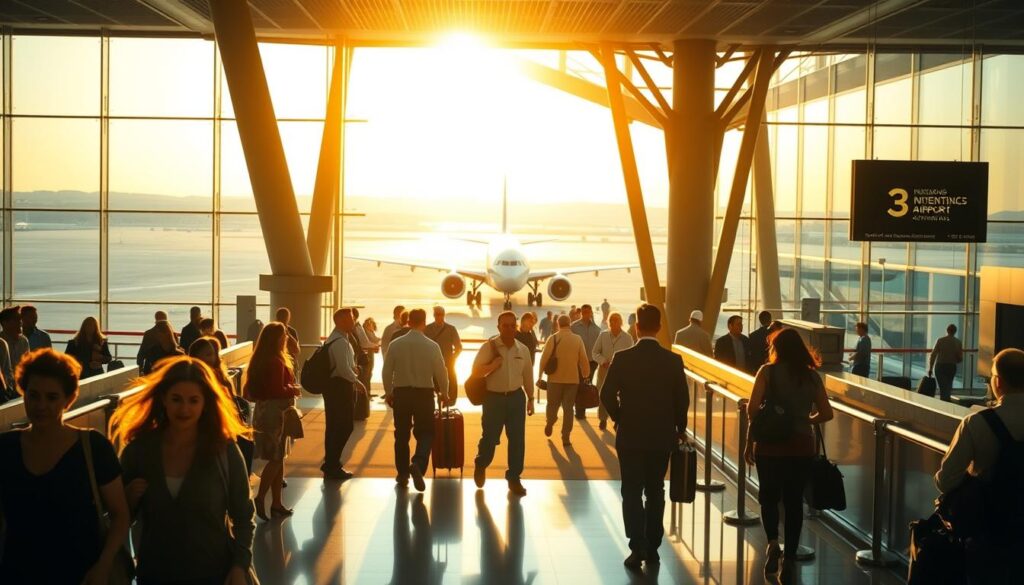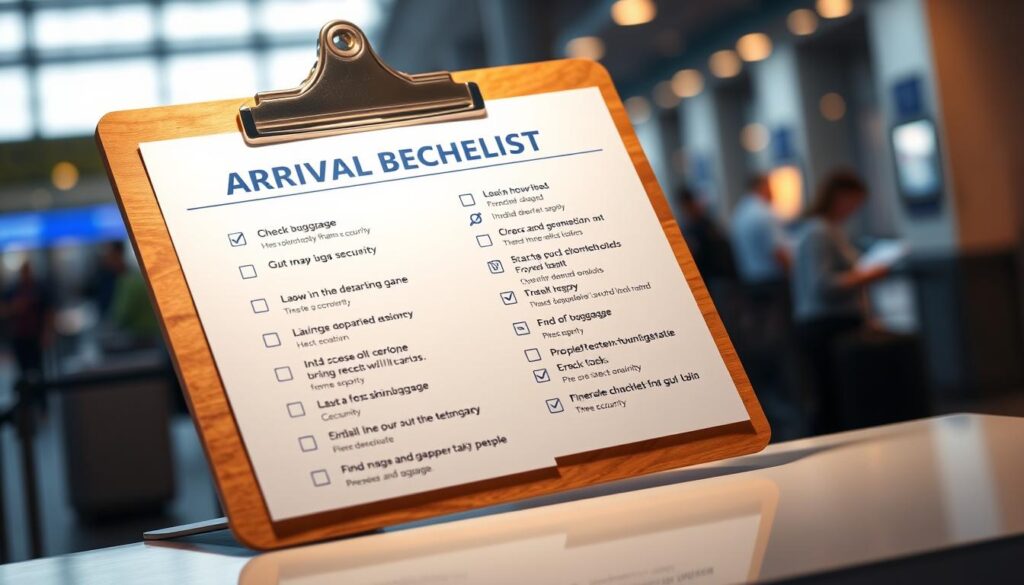How Early Should You Arrive at the Airport? A Checklist by Flight Type
Arriving at the airport on time is crucial for a stress-free travel experience. Airlines like Air Canada recommend arriving with ample time to check-in, drop off bags, and navigate through security without feeling rushed.
The airport arrival time varies based on the flight type. For domestic flights, a different arrival time is recommended compared to international flights. Having a checklist based on the flight type can help travelers prepare and avoid last-minute hassles.
Understanding the ideal airport arrival time for your specific flight can make a significant difference in your travel experience. This introduction provides an overview of the recommended arrival times and what to expect at the airport.
Understanding Airport Arrival Time Factors
Several critical factors influence how early you should arrive at the airport before your flight. Understanding these elements can help you plan your trip more effectively and reduce stress.
Check-in Time is one of the primary factors. Most airlines have a check-in deadline, typically ranging from 30 minutes to 2 hours before the flight, depending on the airline and the type of flight. For instance, some budget airlines may require check-in as early as 2 hours before the flight.

Baggage Drop-off is another crucial consideration. If you’re checking bags, you’ll need to factor in the time it takes to get to the designated baggage drop-off area. This can vary significantly depending on the airport’s layout and the number of passengers.
Security Screening procedures also play a significant role. Security checks can be time-consuming, especially during peak travel times. Familiarizing yourself with the security procedures and considering options like TSA Precheck can help streamline this process.
The type of flight you’re taking—domestic or international—also impacts how early you should arrive. International flights often require more time due to additional security checks and customs procedures.
By understanding these factors and planning accordingly, you can ensure a smoother travel experience. It’s always better to err on the side of caution and arrive early to account for any unexpected delays.
Domestic Flight Arrival Guidelines
Knowing the optimal arrival time at the airport for domestic flights can significantly enhance your travel experience. For domestic flights, it is generally recommended to arrive at the airport 2 hours before the flight.
Arriving at the airport with ample time to spare allows you to complete check-in, drop off your baggage, and clear security without feeling rushed. The Transportation Security Administration (TSA) advises passengers to arrive early to account for any unexpected delays during the security screening process.
For most domestic flights within the United States, a 2-hour window is considered sufficient for these procedures. However, it’s essential to check with your airline for their specific check-in and baggage drop-off deadlines, as these can vary.
Special Considerations
Some airports or specific flights might have unique requirements. For instance, flights from certain airports like Toronto Billy Bishop or within Canada might have different guidelines due to their operational specifics or international agreements.
To ensure a smooth journey, it’s also a good idea to:
- Check your airline’s website for their recommended arrival time.
- Consider the time of day and day of the week; peak travel times may require more time.
- Be aware of any travel alerts or security measures that could impact your airport experience.
By planning your airport arrival according to these guidelines, you can minimize stress and enjoy a more pleasant start to your journey.
International Flight Arrival Recommendations
The key to a stress-free international travel experience lies in understanding the recommended airport arrival times. For international flights, arriving at the airport with plenty of time to spare is not just a suggestion, it’s a necessity.
Generally, airlines and travel advisories recommend arriving at the airport at least 3 hours before the scheduled departure time for international flights. This allows sufficient time for check-in, baggage drop-off, security screening, and customs and immigration processing.
Check-in procedures for international flights can be more complex and time-consuming than those for domestic flights. Many airlines offer online check-in and mobile check-in options, which can streamline the process. However, it’s still essential to arrive at the airport with enough time to drop off your baggage and complete any necessary documentation.

Customs and immigration processing are additional steps that international travelers must go through. These processes can sometimes be lengthy, especially during peak travel times. Therefore, having at least 3 hours before your flight departs is crucial.
In summary, for a smooth and stress-free international travel experience, it’s recommended to arrive at the airport with plenty of time to spare. By understanding and following these guidelines, travelers can ensure they are well-prepared for their journey.
How Early Should You Arrive at the Airport? A Checklist by Flight Type
Airport arrival times can be confusing, but having a clear checklist can simplify your travel experience. Whether you’re flying domestically or internationally, understanding the factors that influence your arrival time is crucial.
General Guidelines for airport arrival times vary based on the type of flight. For domestic flights, arriving at least 2 hours prior to the scheduled departure time is recommended. For international flights, it’s advisable to arrive at least 3 hours before your flight.
Traveling with Special Items
If you’re traveling with special items such as pets, musical instruments, or oversized luggage, you should plan to arrive even earlier. These items often require additional processing and documentation, which can take extra time. For instance, traveling with pets may require a health certificate and special carriers, while musical instruments might need to be checked or carried on with special handling.

It’s a good idea to contact your airline in advance to understand their policies on special items. This can help you plan your arrival time more effectively and avoid any last-minute issues.
Passengers Requiring Assistance
Passengers who require special assistance, such as those with disabilities or unaccompanied minors, should also consider arriving earlier. Airlines often have specific procedures in place to assist these passengers, and arriving early ensures that these services are available when needed.
Pre-Flight Preparations are key to a smooth airport experience. Make sure to have all necessary documents ready, including your boarding pass, ID, and any required visas. Having these documents ready can significantly reduce your check-in and security processing time.
By understanding the specific needs related to your flight type and personal requirements, you can plan your airport arrival time more effectively. This not only reduces stress but also ensures that you have a more enjoyable start to your journey.
Conclusion
Understanding the ideal airport arrival time is crucial for a smooth travel experience. Based on the type of flight, whether domestic or international, travelers can refer to the provided checklist to plan their arrival accordingly.
For a stress-free journey, it’s essential to consider individual circumstances, such as checking with the airline for specific guidelines, like Delta or United Airlines, and planning ahead to avoid last-minute hassles.
By following the travel tips outlined and adhering to the checklist by flight type, travelers can ensure a hassle-free experience at the airport, making their overall travel experience more enjoyable.
